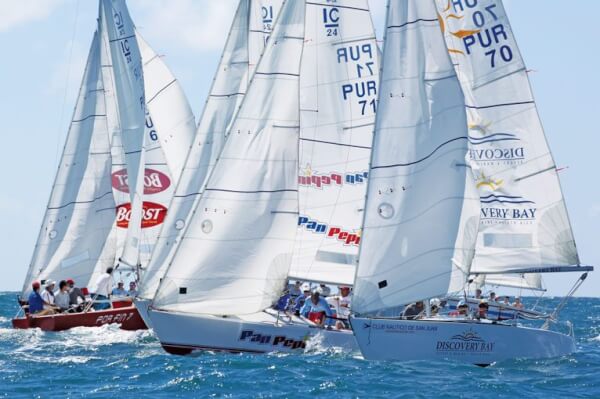The first weekend in December is always the date for the Gustav Wilmerding Regatta. This fun but competitive event is run by the Loyal West End Yacht Club of Tortola and hosted by the Jolly Roger Restaurant and Pirates’ Bight at Norman Island. The story goes that Gustav Wilmerding was a famous Pirate who lived on Little Thatch in the 1700s. Upon returning, he would ring a bell, known as a “Ding Dong” after his successful raids. Thus, the starting mark for this 2-day regatta is known as the “Ding Dong Mark” and begins the course that will take racers between two and three hours to complete.
Because of the ferry traffic at Soper’s Hole, the Saturday race is a pursuit format with a start at the Jolly Roger and a finish at The Bight. Each boat starts at a different time according to their handicap, so the racing boats finish in the order of their position over the line. The race back to Tortola from Pirates is much the same way with the Awards Ceremony being held at the Jolly Roger.
Although the turnout was lighter than in past years, due to many activities being held on the weekend, loyal sailors still turned up for some good sailing and a great time. Pajamas crew Martin Van Houten reports that the “the days were great for racing, with beautiful skies and winds at about 15 knots out of the east. The best racing was on Sunday from The Bight back to Tortola. Four boats were neck in neck rounding Flannigan Island to port. This is where the winners were decided.”
Mistress Quickly won, Ruffian was second, with Pajamas third on Saturday and fourth on Sunday. Everyone enjoyed the camaraderie and looks forward to the Sweethearts & Classic Yacht Regatta on Feb. 13th & 14th.







